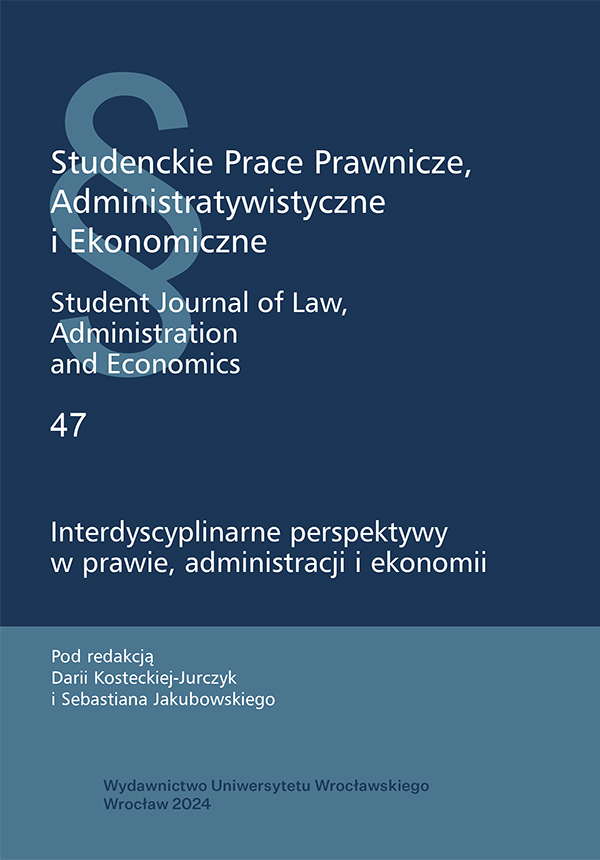

Articles

Savings to one of the main electronic components that constitute the source of investment. In the further part of the analysis, savings structures allow for saving methods that cover households in individual EU countries. The aim of the article is also to distinguish groups of European Union countries that are characterized by the structure of household savings before and after the COVID crisis. For this purpose, the tool of multidimensional comparative analysis was used, which is an analysis of clusters and three independent EU clusters, taking into account data before and after the COVID crisis. There are specific EU countries where savings are preserved, and households prefer: traditional saving models (placing resources in a bank), preserved for the purpose of using this function, as well as health and life protection. These results include common financial instruments that are attractive or not intended for specific groups of households.
Analiza skupień, StatSoft Electronic Statistic Textbook, https://www.statsoft.pl/textbook/stcluan.html.
Banaszczak-Soroka U., Wielkość i struktura oszczędności gospodarstw domowych krajów Unii Europejskiej w kontekście planu inwestycyjnego dla Europy. Wybrane aspekty, [w:] Czym żyje Unia Europejska? Wybór zagadnień, red. E. Pancer-Cybulska, K. Biegun, Kołobrzeg-Wrocław 2018, s. 135–166.
Coleman A, Household Savings: A Survey of Recent Microeconomic Theory and Evidence, Treasury Working Paper Series 98/90, New Zealand 1998.
Cymerman J., Cymerman W., Zastosowanie analizy skupień do klasyfikacji województw według rozwoju rynków nieruchomości rolnych, „Świat Nieruchomości” 2017, nr 3, s. 55–61.
Frączak B., Analiza czynników wpływających na oszczędzanie i inwestowanie gospodarstw domowych, „Studia Ekonomiczne” 122, 2012, s. 87–98.
Kobus P., Pietrzykowski R., Zastosowanie modyfikacji metody k-średnich w analizie portfelowej, „Zeszyty Naukowe SGGW — Ekonomika i Organizacja Gospodarki Żywnościowej” 2006, nr 60, s. 301–308.
Korzeniowska A., Struktura oszczędności finansowych gospodarstw domowych w Polsce na tle wybranych krajów, „Zeszyty Naukowe Uniwersytetu Ekonomicznego w Krakowie” 239, 2015, s. 105–115.
Kulpaka P., Struktura oszczędności finansowych gospodarstw domowych w Polsce w latach 2000– 2014, „Annales Univeritatis Marie Curie-Skłodowska. Sectio H, oeconomia” 49, 2015, nr 4, s. 311–318.
Le Blanc J., Porpiglia A., Teppa F., Zhu J., Ziegelmeyer M., Household saving behavior in the Euro Area, „International Journal of Central Banking” 12, 2016, nr 2, s. 15–69.
Marek T., Analiza skupień w badaniach empirycznych, Warszawa 1989.
Metody hierarchiczne, PQStat — Baza Wiedzy, http://manuals.pqstat.pl/statpqpl:redpl:skupienpl:hierarchpl#fnt__1.
Migut G., Zastosowanie technik analizy skupień i drzew decyzyjnych do segmentacji rynku, StatSoft Polska, Kraków 2009.
Muradoğlu G., Taşkın F., Differences in household savings behavior: Evidence from industrial and developing countries, „The Developing Economies” 34, 1996, nr 2, s. 138–153.
Musiał M., Zachowania oszczędnościowe Polaków na tle wybranych krajów Unii Europejskiej, „Marketing i Rynek” 2014, nr 8, s. 1147–1155.
Panek T., Statystyczne metody wielowymiarowej analizy porównawczej, Warszawa 2009.
Roszko-Wójtowicz E., Analiza skupień w ocenie warunków pracy w krajach Unii Europejskiej, „Wiadomości Statystyczne” 59, 2014, nr 11, s. 65–84.
Rozmus D., Trzęsiok T., Analiza czynników kształtujących oszczędności polskich gospodarstw domowych, „Studia Ekonomiczne” 345, 2017, s. 63–84.
Szkutnik W., Sączewska-Piotrowska A., Hadaś-Dyduch M., Metody taksonomiczne z programem STATISTICA, Katowice 2015.
Tryon R.C., Cluster Analysis: Correlation Profile and Orthometric (Factor) Analysis for the Isolation of Unities in Mind and Personality, New York 1939.